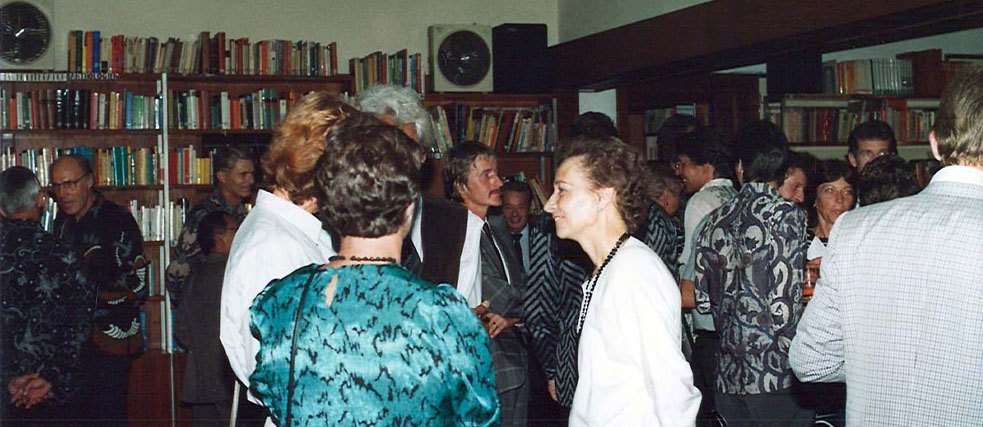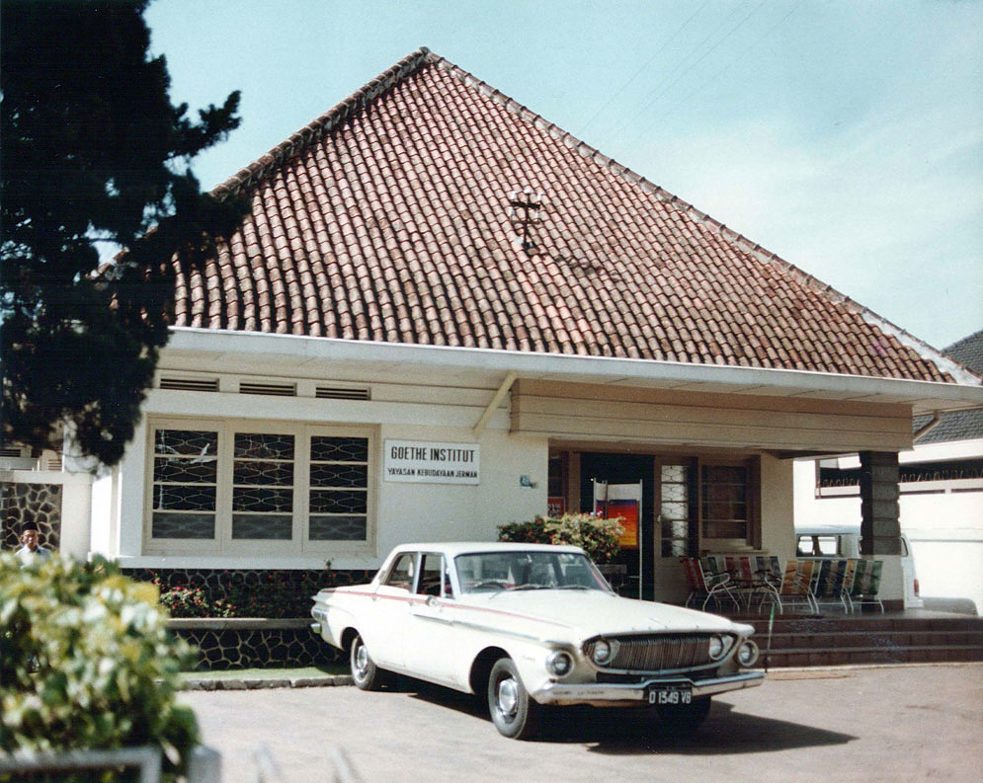20 Years Goethe-Institut Bandung: Dr. Peter Sternagel

When Mr. Hobohm came to Bandung in 1969 to open a branch of the Goethe-Institut, none of us would have thought that the house on JI. Riau, as the street is still popularly called today, would hardly be able to accommodate the number of German students ten years later. In order to cope with the rush of those eager to learn more about Germany and the German language, the house built in 1935 that had been home to the Bandung German School for years needed to be remodeled. At the same time, the head office in Munich sent a second instructor who should devote himself entirely to the language work, since the institute director had to concentrate completely on the mounting interest in German cultural events.
And so here we are today in 1989, still in this modest house, we two delegated Germans working with a team of 11 employees and currently 16 instructors. No teachers’ room, no event hall. However, since our visitors and students are apparently not bothered by the close quarters—in fact sometimes it seems the opposite is the case—the spatial limitations are of little consequence. We are happy to say that the institute is full of vibrant life from early morning to evening nearly every day. If we had a regular door at the entrance, it would be swinging open all day long. The flow of visitors never stops. But because we don’t have a real door—a rare situation in this world—but rather only a sliding panel door that moves just twice a day, the Goethe-Institut Bandung is in the truest sense of the word an open house.
 Goethe-Institut Bandung, in 1990; © Goethe-Institut Bandung
That the Goethe-Institut Bandung is so heavily frequented is perhaps less due to the quantity of what we have to offer and how interesting it is than to this city and its inhabitants. First, Bandung is a university city with a great many inquisitive and knowledge-hungry young people. It is also particularly open to foreigners, a fact confirmed by, among other things, its partnership with Braunschweig, one of the first of its kind in the world dating back to a Bandung initiative in the early 1950s. And finally, Banding is full of self-confident intelligence that takes the initiative to seek international exchange. In such a city, a foreign cultural institute is not seen as a foreign body, as elsewhere, which one encounters with merely friendly respect—it is integrated without further ado into the kaleidoscope of its own world as a colorful stone.
Goethe-Institut Bandung, in 1990; © Goethe-Institut Bandung
That the Goethe-Institut Bandung is so heavily frequented is perhaps less due to the quantity of what we have to offer and how interesting it is than to this city and its inhabitants. First, Bandung is a university city with a great many inquisitive and knowledge-hungry young people. It is also particularly open to foreigners, a fact confirmed by, among other things, its partnership with Braunschweig, one of the first of its kind in the world dating back to a Bandung initiative in the early 1950s. And finally, Banding is full of self-confident intelligence that takes the initiative to seek international exchange. In such a city, a foreign cultural institute is not seen as a foreign body, as elsewhere, which one encounters with merely friendly respect—it is integrated without further ado into the kaleidoscope of its own world as a colorful stone.
We would like to thank all those who have supported and helped us in the first 20 years of our work in Kota Kembang.
Bandung, January 1989
Dr. Peter Sternagel
Back to 50th Anniversary